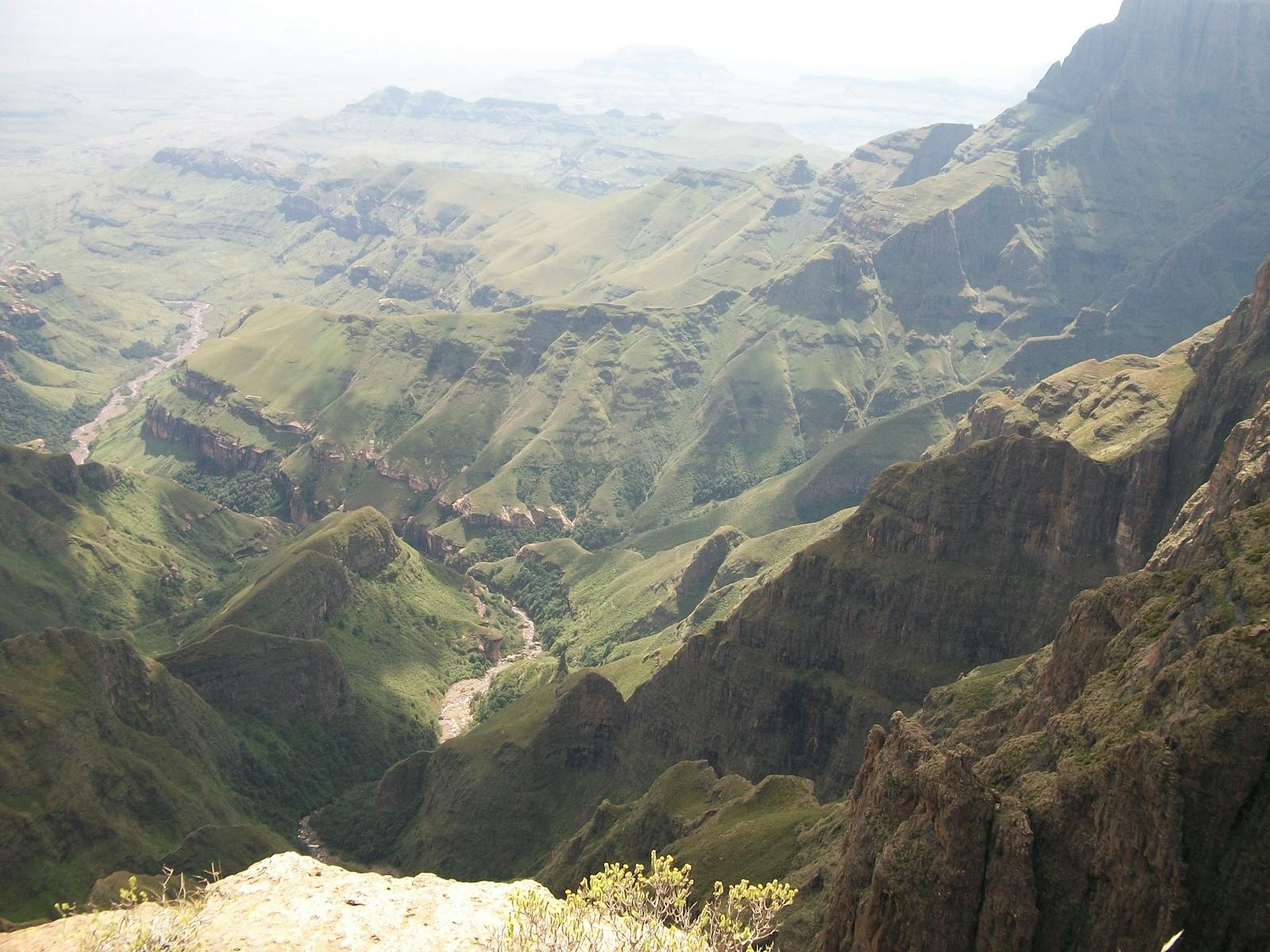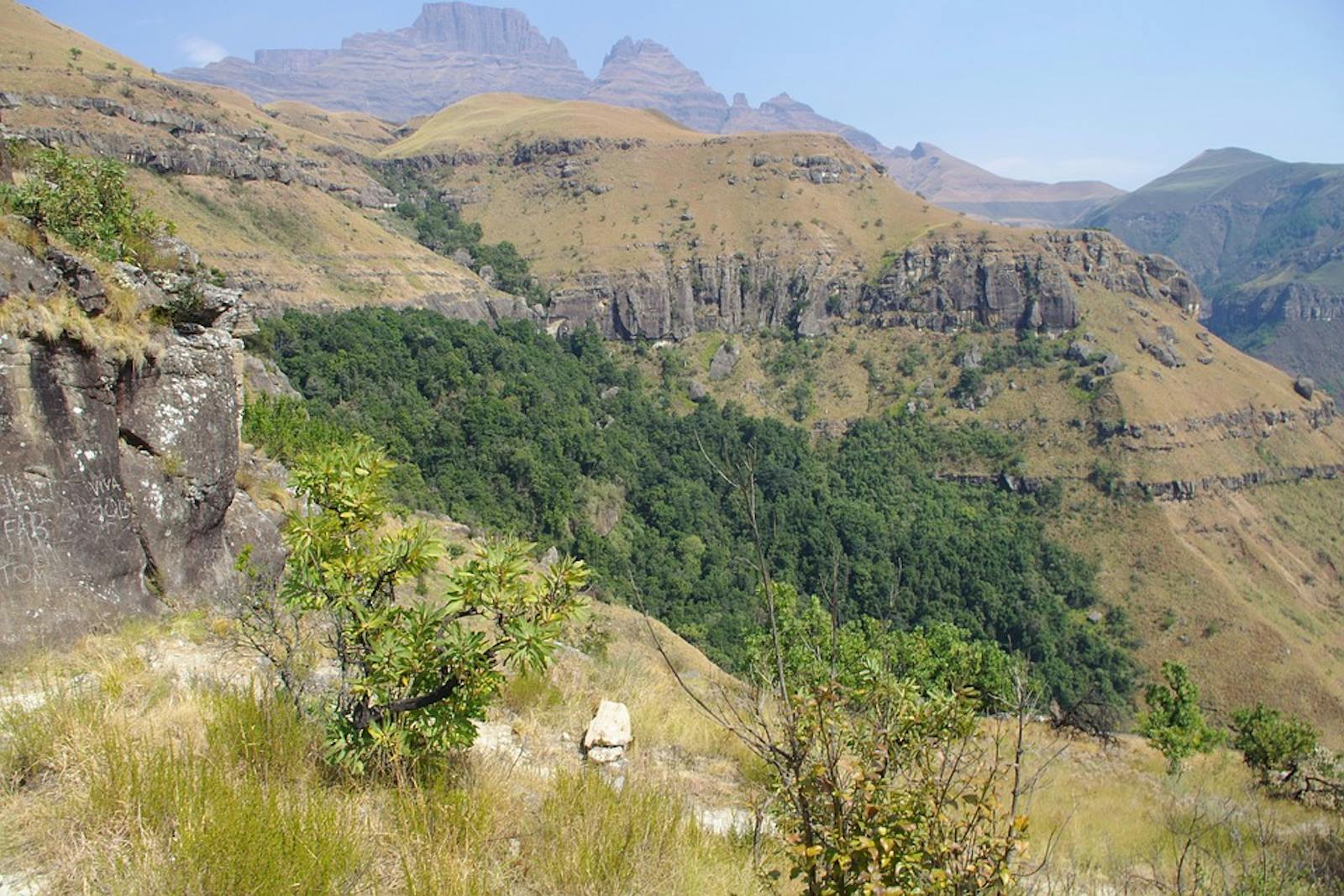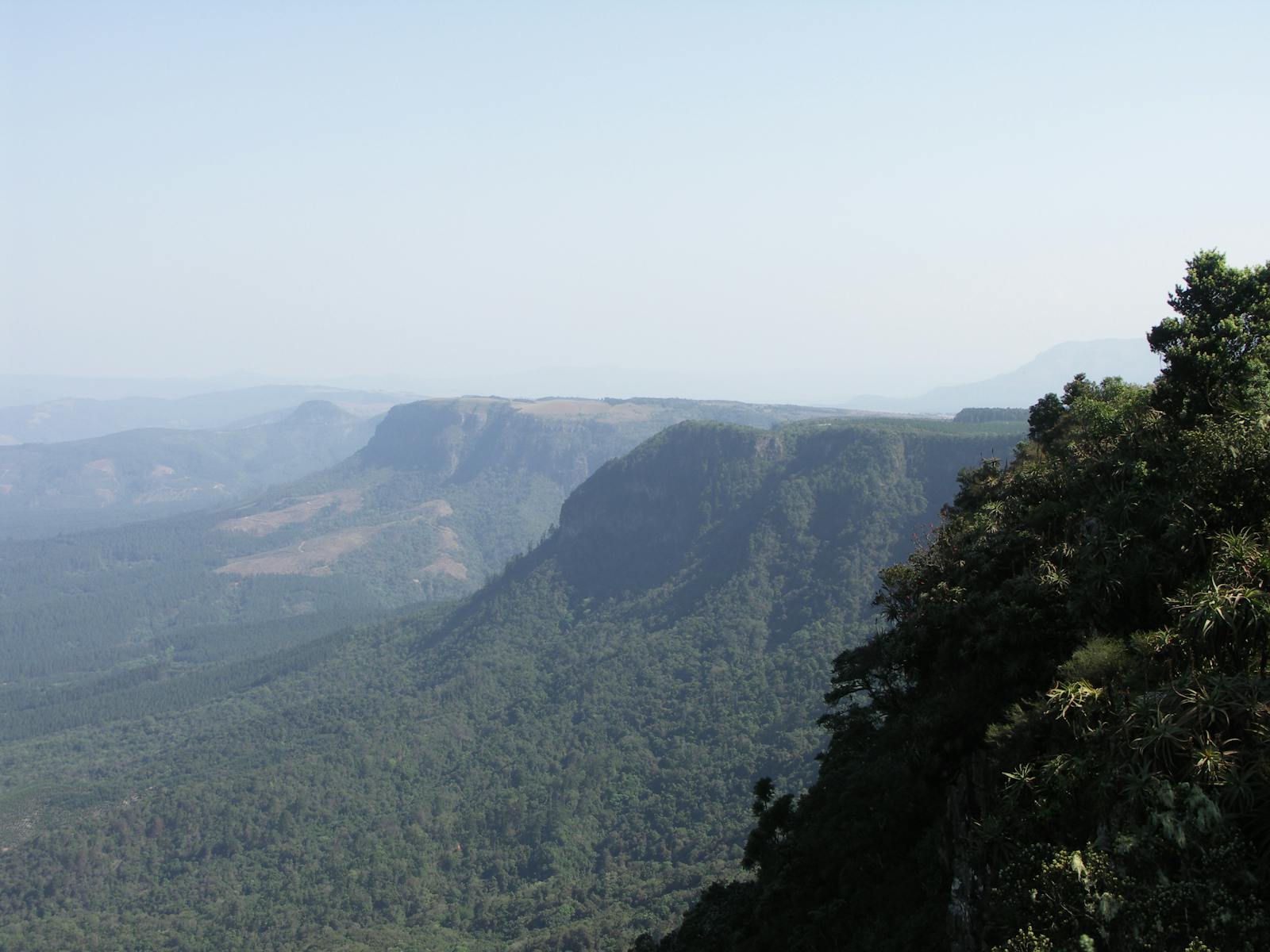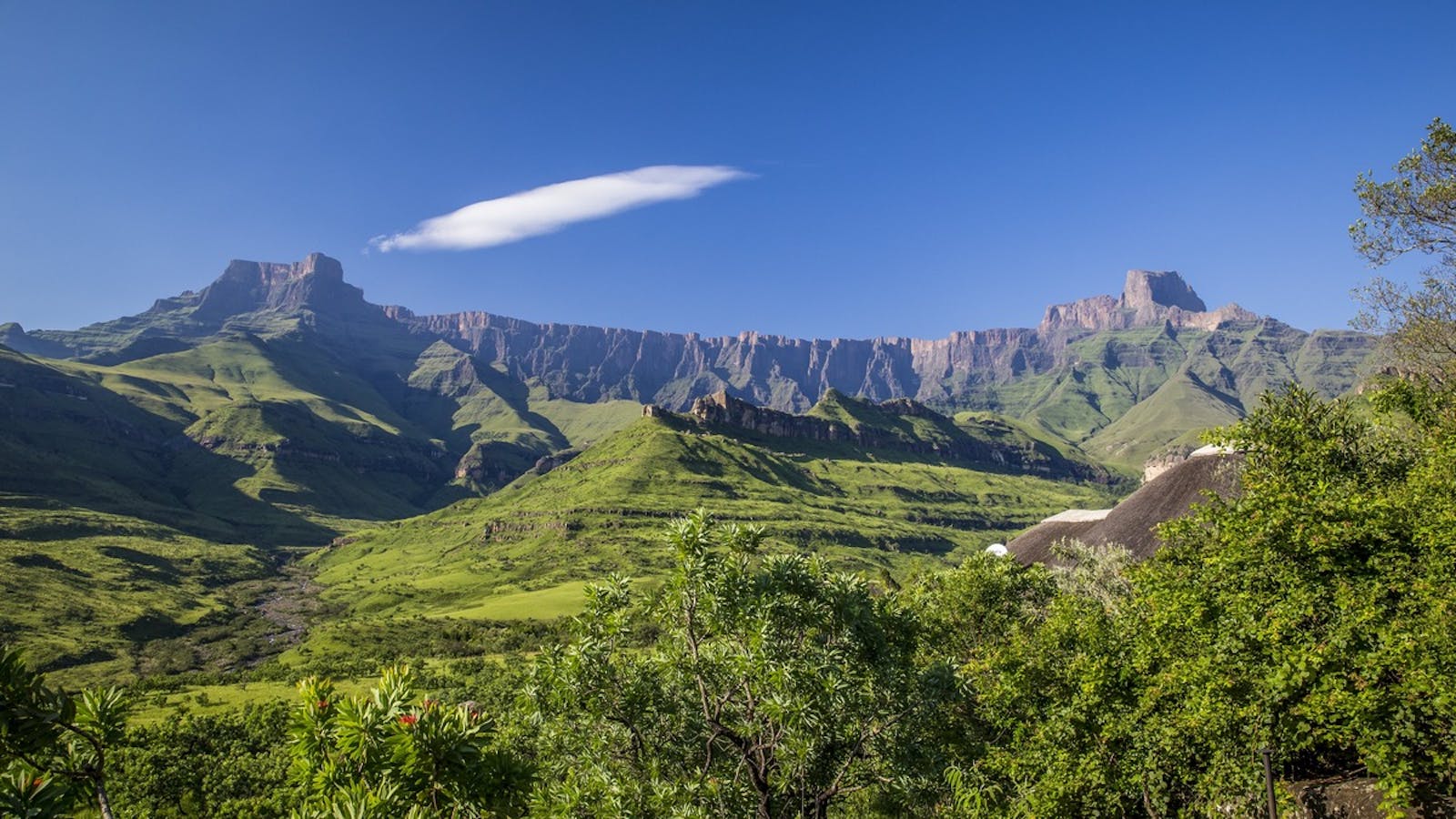Drakensberg Escarpment Savanna and Thicket
The ecoregion’s land area is provided in units of 1,000 hectares. The protection goal is the Global Safety Net (GSN1) area for the given ecoregion. The protection level indicates the percentage of the GSN goal that is currently protected on a scale of 0-10.
Bioregion: Southeast African Subtropical Grasslands (AT8)
Realm: Afrotropics
Ecoregion Size (1000 ha):
3,508
Ecoregion ID:
40
Conservation Target:
7%
Protection Level:
1
States: South Africa
Cycads have survived three mass extinction events and the fossil records date cycads back to approximately 299 million years ago, making them the oldest remaining group of seed plants in the world. However, they are also classified as the world’s most threatened plant group, mainly due to illegal harvesting for the ornamental plant trade and medicinal trade, as well as their slow growth and recovery rate. The Drakensberg Escarpment Savanna and Thicket is one of the few remaining places with exceptionally high cycad diversity in Africa, with endemics and near-endemic species including the Kei cycad, Bushman’s river cycad, Alexandria cycad, cerinus cycad, and the Albany cycad.
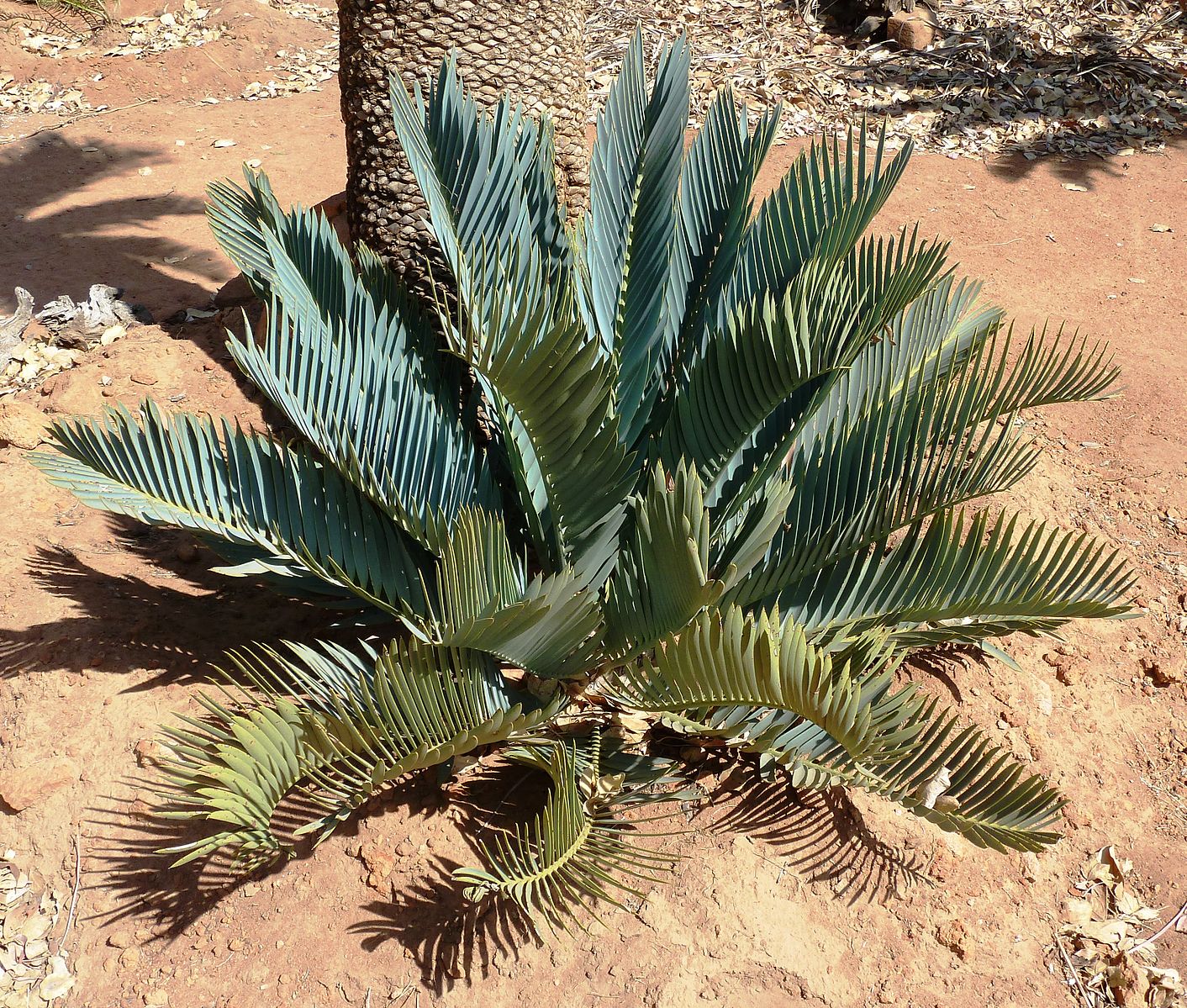
The flagship species of the Drakensberg Escarpment Savanna and Thicket ecoregion is the kei cycad. Image credit: Creative Commons
The Drakensberg Escarpment Savannah and Thicket are found alongside the numerous rivers of the Eastern Cape and KwaZulu-Natal Provinces of South Africa. The climate is seasonal and relatively dry, with most areas experiencing below 800 mm rainfall per annum, falling to 450 mm in southern areas. Up to 75 percent of the annual precipitation falls within the warm summer months between October and March. Temperature ranges from 12o to 26oC and the ecoregion is virtually frost-free, due to its close proximity to the sea. The rifting and break-up of Gondwana and subsequent cycles of uplift and erosion have shaped the landscape. These processes formed the Great Escarpment, which separates the elevated interior of Southern Africa from the coastal margins. The soils are deep and well drained and are moderately to highly leached.
The thickets of this ecoregion have similar plant diversity to other vegetation types in the southeastern Cape and are in fact as species-rich as the fynbos formations. Between 6,000 and 7,000 plant species occur in the ecoregion. Species endemism is relatively low, with most found in succulent genera such as Euphorbia, Crassula, Delosperma, and Aloe.
_CC-Bernard%20Dupont-2016.jpg)
Grey Rhebok. Image credit: Bernard Dupont, Creative Commons
The overall faunal diversity is moderate to poor and there are few endemic species. Only two near endemic mammal species are found in this ecoregion; the giant golden mole, and the Natal red rockhare. Populations of large mammals have declined markedly and some larger carnivores have become locally extinct. Bush pigs remain common, while blue duiker is mostly confined to forest and dense thicket. Other antelopes include bushbuck, greater kudu, common duiker, and mountain reedbuck. Bird richness is high, but all species are shared with surrounding ecoregions. The Cape griffon occurs, with important breeding colonies at Collywobbles vulture colony, found along the cliffs of the convoluted gorge formed by the Mbhashe River. Two of the reptiles near-endemic to the ecoregion (Natal midlands dwarf chameleon and KwaZulu-Natal hinge-backed tortoise) are regarded as locally rare.
High human densities in these areas have resulted in significant landscape degradation and a severe depletion of many wildlife populations. Less than 1% of the ecoregion is under protection. The Oribi Gorge Nature Reserve protects part of the Mzimkulwana River in KwaZulu-Natal. Other protected areas include Entumeni and Weenan Nature Reserves, Nkandla Forest Reserve, and, Albert Falls Game Reserve.
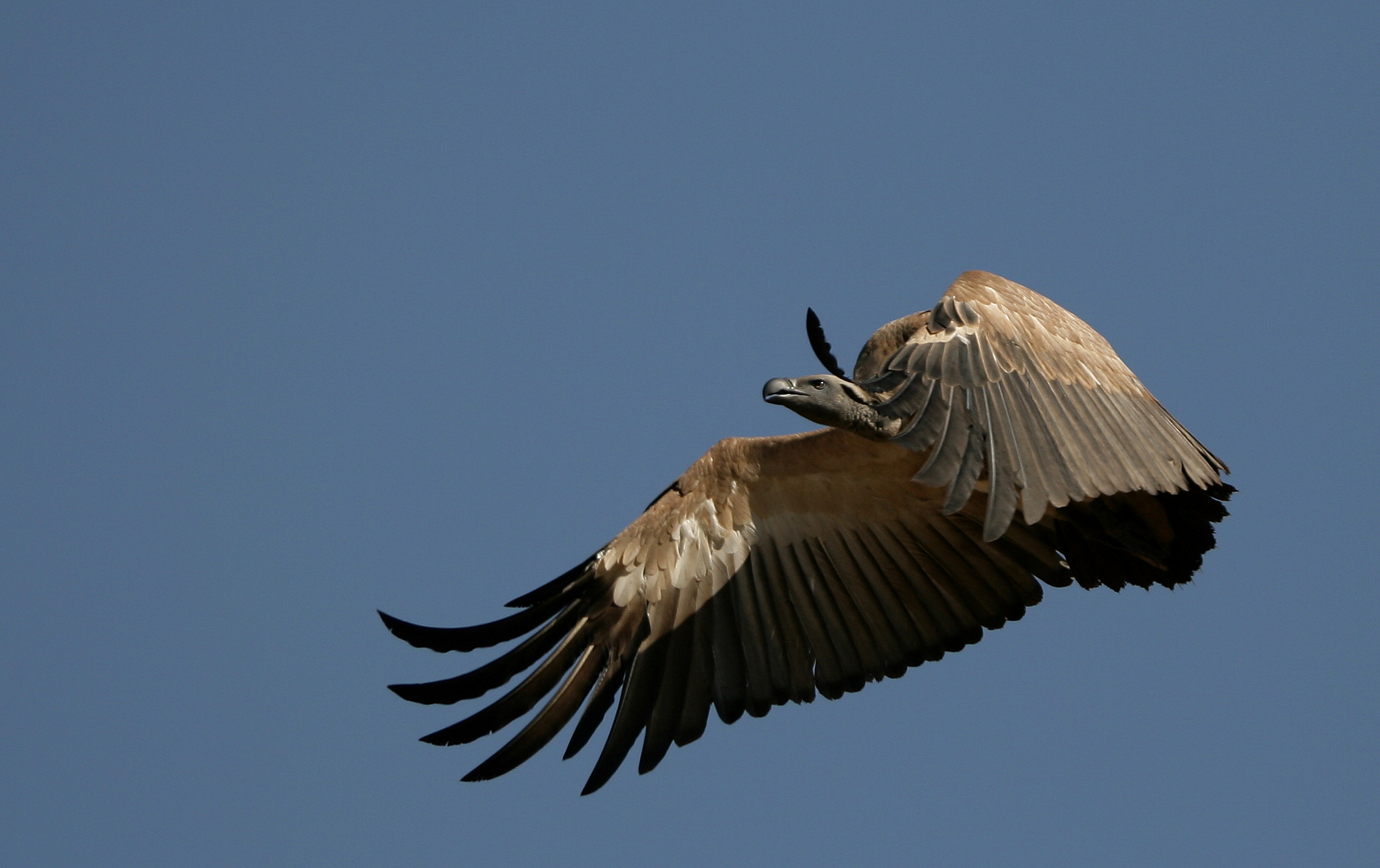
Cape vulture. Image credit: Creative Commons
In the northern areas, extensive cultivation of staple and cash crops occur. In addition, increased land pressures due to rapidly expanding human populations is resulting in land being cleared, placing the remaining vegetation under considerable threat. Parts of the area suffer from overgrazing mostly from goats, sheep, and cattle, resulting in the loss of biomass and nutrients, soil erosion, and creating preferable conditions for invasive alien species. High livestock densities also pose considerable threat to wildlife, as this generally causes a displacement of game, as there is less suitable habitat available.
Furthermore, wild predators and scavengers such as the black-backed jackal, caracal, leopard, and the Cape vulture have been eradicated by livestock farmers who see these animals as a threat to their livelihoods. Poisoned carcasses are often used for this purpose. Unsustainable plant harvesting poses significant threat to several plant species that are collected in great numbers using methods that kill the plant. A further threat is the invasion of natural vegetation by alien plants including Chromoleana odorata, Lantana camara, and Psidium guajava.
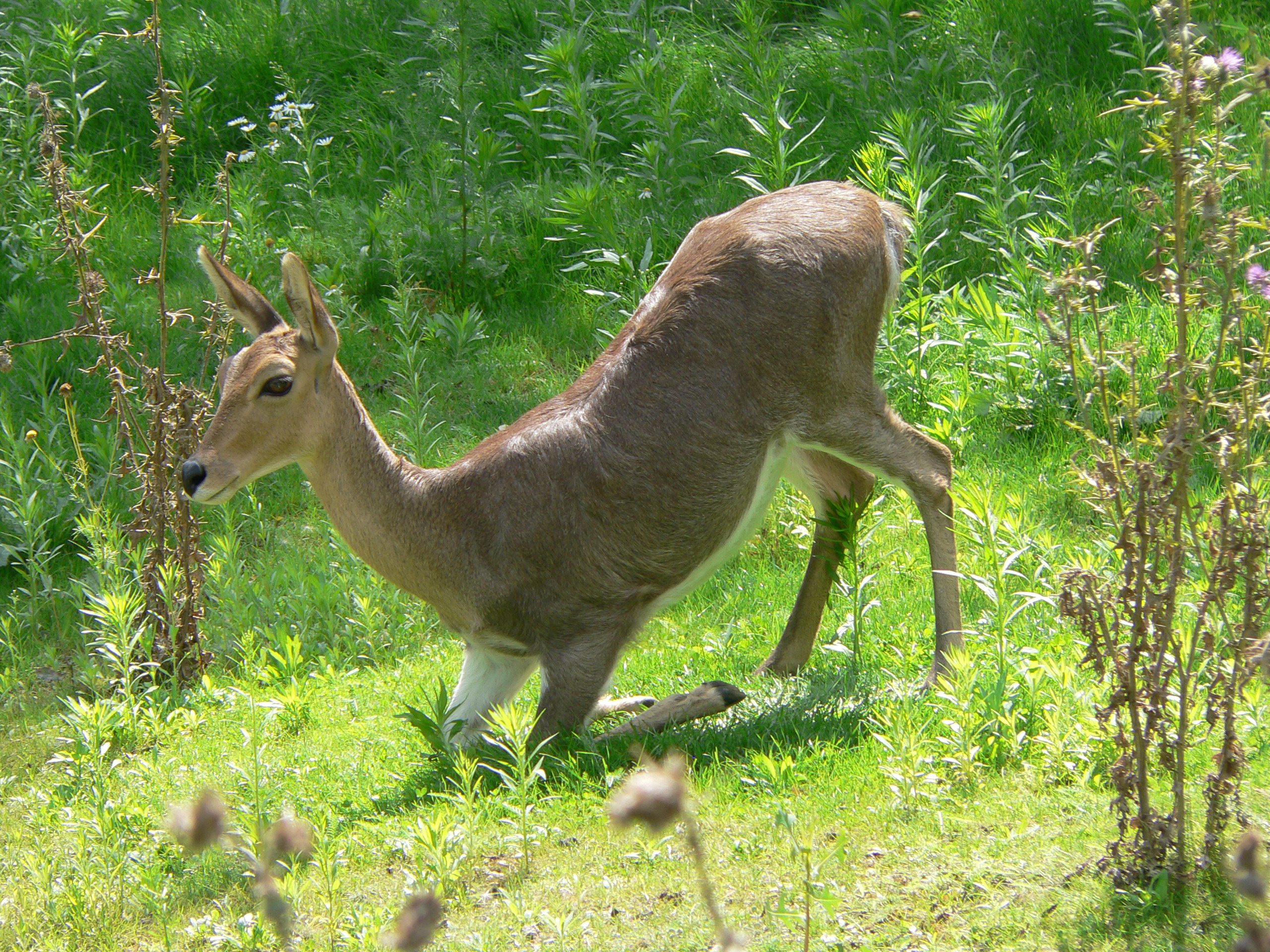
Bergriedbock. Image credit: Creative Commons
The priority conservation actions for the next decade will be to: 1) improve and implement environmental regulations; 2) promote the sustainable use of natural resources, for example medicinal plants, and enforce the regulation of plant harvesting practices; and 3) restore degraded thicket sites whilst preventing a monoculture, for example using hardy perennial species.
Citations
1. Burgess, N., Hales, J.A., Underwood, E., Dinerstein, E., Olson, D., Itoua, I., Schipper, J., Ricketts, T. and Newman, K. 2004. Terrestrial ecoregions of Africa and Madagascar: a conservation assessment. Island Press.
2. CEPF. 2010. Ecosystem Profile: Maputaland-Pondoland-Albany Biodiversity Hotspot. [Online]. [Accessed 27 April 2018]. Available from: https://www.cepf.net/sites/default/files/final_mpah_ep_1.pdf
3. Rutherford, M.C., Powrie, L.W. and Husted, L.B. 2014. Herbivore‐driven land degradation: consequences for plant diversity and soil in arid subtropical thicket in south‐eastern Africa. Land Degradation & Development. 25(6), pp.541-553.
4. Williamson, J., Maurin, O., Shiba, S.N.S., Van der Bank, H., Pfab, M., Pilusa, M., Kabongo, R.M. and Van der Bank, M. 2016. Exposing the illegal trade in cycad species (Cycadophyta: Encephalartos) at two traditional medicine markets in South Africa using DNA barcoding. Genome. 59(9), pp.771-781.
